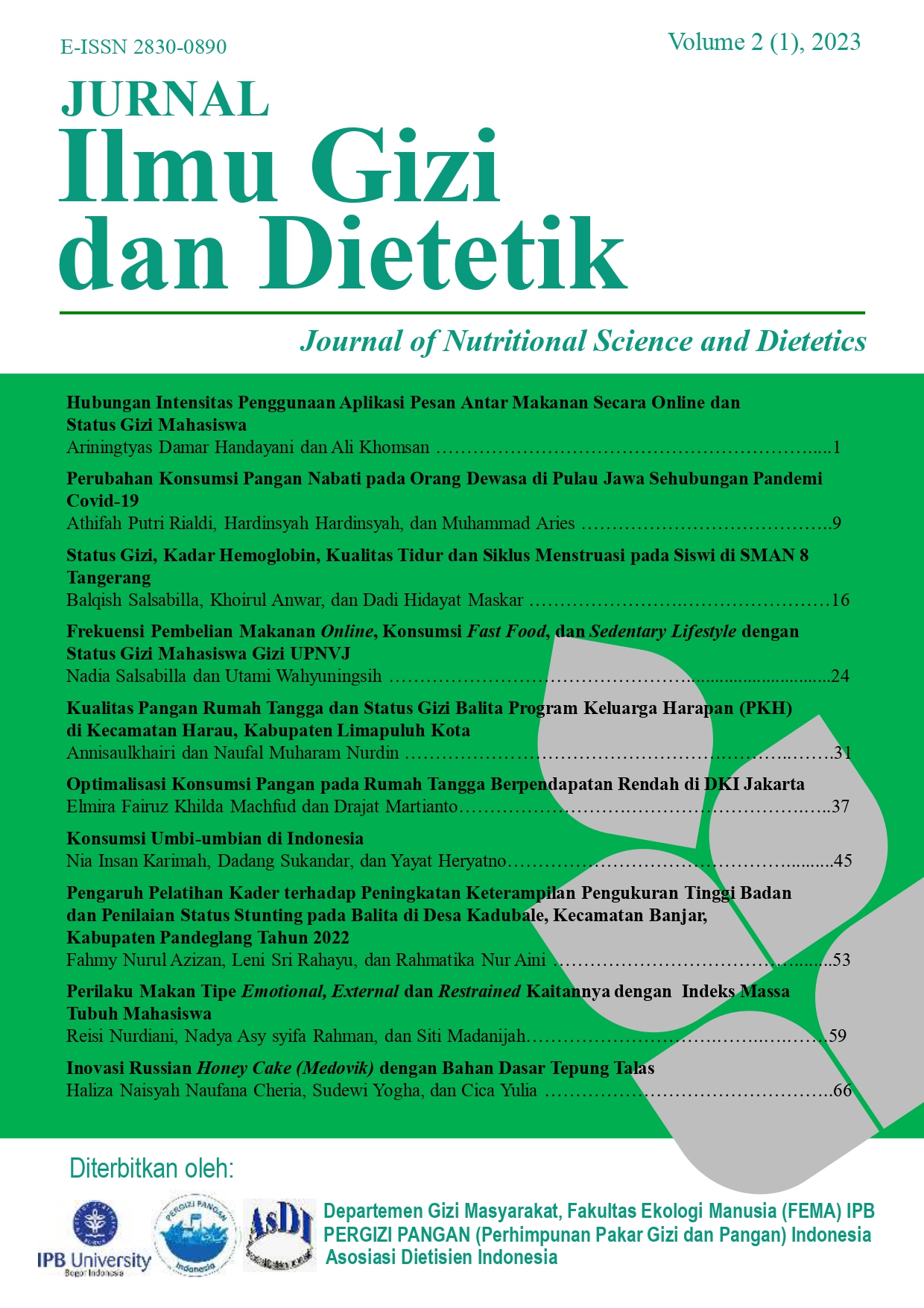Optimalisasi Konsumsi Pangan pada Rumah Tangga Berpendapatan Rendah di DKI Jakarta Optimization of Food Consumption Among Low Income Households in DKI Jakarta
Abstract
This study aims to evaluate the quality and quantity of food consumption among the 20% lowest income households (quintile 1) living in DKI Jakarta and develop a recommendation model for food composition that can meet nutritional needs at an affordable cost for those households. This study used secondary data from National Socio-economic (Susenas) 2021. The design of this study is a descriptive study. The Susenas of DKI Jakarta involved 5.890 sample households and all of the household samples become the sample of this study. The results showed that the share of household food expenditure decreased along with the increase in income class. The level of energy sufficiency, protein, and the Desirable Dietary Pattern (DDP) score increased along with the increase in income class. Households in quintile 1 were food insecure, had moderate energy deficits, and had less diverse consumption patterns. The food consumption optimization model used linear programming and generated 4 models. Each model could fulfill the energy and protein needs of 90-110% RDA and increase the DDP score 80-97 with costs of Rp10,649-Rp15,756, which was below the actual expenditure. By selecting the right food and using the expenditure allocation maximum equal to quintile 1 household food expenditure, energy, and protein adequacy can still be fulfilled and the DDP score can still be increased.

